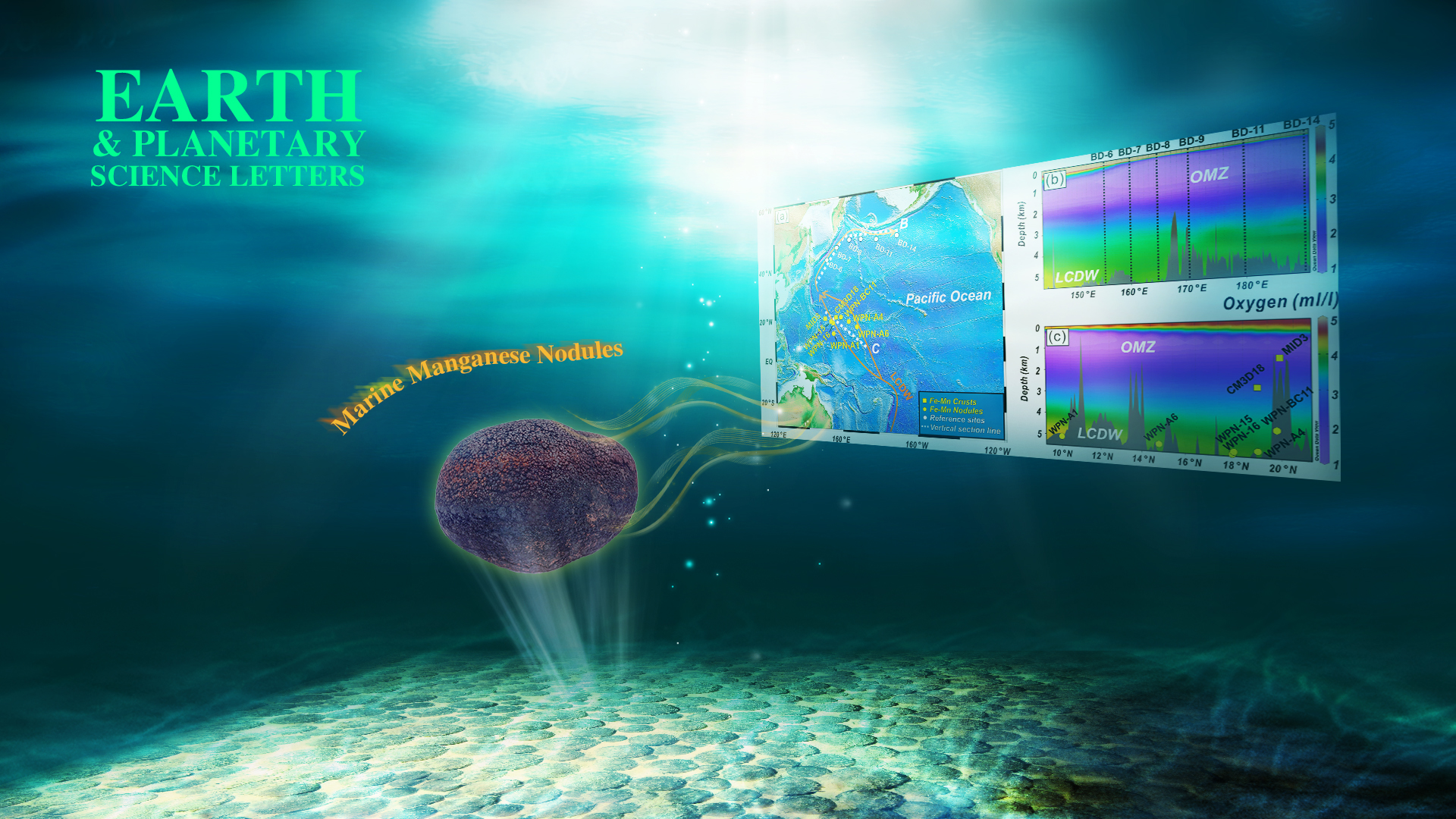Recently, a team of researchers from the Centre for Marine Magnetism (CM2) of the Department of Ocean Science and Engineering at the Southern University of Science and Technology (SUSTech) made significant progress in the paleoenvironment of marine ferromanganese nodules and crusts. They provided a new method to study ocean current activity. Their work, entitled “A magnetic approach to unravelling the paleoenvironmental significance of nanometer-sized Fe hydroxide in NW Pacific ferromanganese deposits,” was published in the renowned journal Earth and Planetary Science Letters.

Iron (Fe) is an essential element in the global oceans and plays an important role in controlling phytoplankton growth, ocean biogeochemistry, and regulating the global carbon cycle. The source of Fe in the global oceans mainly includes eolian dust, river detritus, iceberg-derived Fe, and hydrothermal Fe. In addition, bacteria can add dissolved Fe into the water column by decomposing sinking particles, which drives the biogeochemical cycling of Fe.

Figure 1. Deep-sea video recording of marine manganese nodules. (A-C) The figures of manganese nodule profile, deep-sea nodule figure, and representative hand specimen.
Oceanic ferromanganese nodules and crusts (Fe-Mn deposits) are composed of iron and manganese oxyhydroxide that are distributed on the vast basins and seamounts of the global ocean (Hein et al., 2020). These deposits are among the most important Fe sinks on Earth. For example, Fe-Mn nodules in the Pacific Ocean Clarion-Clipperton Zone alone are estimated to contain 1.3 ×109 tons of Fe. They are composed of Fe-Mn oxide. The small size and complex structure make amorphous Fe hydroxides difficult to be effectively quantified and characterized, which prevents in-depth understanding of AFHs in Fe-Mn deposits for their significance in paleoceanography and biogeochemical cycling of Fe.
They have innovatively used heating methods to heat and dehydrate samples of amorphous Fe hydroxides into nanoscale iron-oxide crystals (magnetite, hematite, etc.), and comprehensive rock magnetic analyses were performed to characterize and quantify the newly formed magnetic minerals, based on which they addressed the significance of seafloor paleoenvironment where the amorphous Fe hydroxides formed.

Figure 2. TEM results of the magnetic extracts for samples from Fe-Mn nodule. (a-e) The grain size of magnetic particles extracted from 700◦C treated Fe-Mn nodule is in the range of SP, with diameters of ∼10-20 nm. (b) The nanometer-crystals of magnetic minerals under bright-field image mode versus that under the scanning transmission mode (top right). (f-j) SAED results (yellow arrows indicate the locations) reveal that the SP particles are composed of magnetite (f-g and i), maghemite (h), and hematite (j).
They applied the method to manganese nodules and crusts from multiple stations in the Western Pacific (Figure 3), and found a significant correlation between these iron oxides and ocean depth, especially at depths of 5000 meters. This distribution is consistent with the distribution of iron particles, redox-sensitive trace elements, and neodymium (Nd) isotopes, which indicate ocean current activity. In the study area, there is an obvious oxygen-rich bottom current activity from the Antarctic at a depth of 5000 meters, which means that the ocean current activity causes the response of multiple environmental indicators. Therefore, amorphous nano-sized iron oxides in manganese nodules and crusts are sensitive to ocean current activity, indicating that the new method is of great significance for the study of marine paleoenvironment.

Figure 3. Locations of Fe-Mn nodule and crust sampling sites and reference sites. (a) Yellow and white spots indicate the location of sampling and reference sites, respectively. White dash lines indicate the location of vertical section oxygen profiles generated by Ocean Data View based on World Ocean Atlas. The orange lines indicate the pathways of the Lower Circumpolar Deep Water (LCDW). (b-c) Image of vertical section profiles for oxygen in the water column along with sampling and reference sites (OMZ =oxygen minimum zone).
Research Assistant Professor Xiaodong Jiang is the first author of this paper. Assistant Professor Yu-Min Chou and Chair Professor Qingsong Liu are the corresponding authors. The cooperating institutes are the Australian National University (ANU), U.S. Geological Survey, and the National Institute of Polar Research of Japan.
This work is supported financially by the National Key Research and Development Program of China, the National Natural Science Foundation of China (NSFC), and the Shenzhen Science and Technology Program. This research used samples provided by the China Ocean Mineral Resource R&D Association (COMRA).
Paper link: https://doi.org/10.1016/j.epsl.2021.116945
Proofread ByAdrian Cremin, Yingying XIA
Photo By